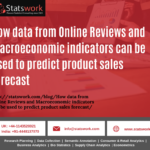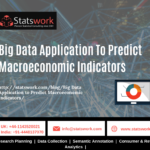Big Data And Artificial Intelligence In Drug Discovery
In
Brief:
- The
integration of big data and AI is making a significant difference in the
discovery of a targeted drug. - An overview of the currently available advanced
methods for drug discovery using Big Data and AI and essential aspects of
exploiting varieties of databases for drug discovery.
Introduction
Drug discovery is a time consuming and multifaceted journey, with
extraordinary insecurity that a drug can succeed. In drug development, the
evolution of Big Data and Artificial Intelligence (AI) methodology has revolutionized the
methods to block long-standing challenges. AI and Big Data have the prospective
to lower the cost and time of drug trials, to better regulate patient upshots
with established drugs, and to better design new drugs. Computer software and
algorithms can provide better analytics before and during the manufacturing
processes and stimulate insights to fuel better decisions in the pharmaceutical
industry.
Big Data In Drug Discovery
Data can be cast-off as a tool to recognize formerly undiagnosed patients, even before their indicators are evident. By the use of algorithms and data mining, the research identifies high-risk entities, especially for less noticeable disease symptoms. Data mining is also the least hostile way to govern a diagnosis.

The challenges of a big-data transformation
For a big-data change in pharmaceutical
R&D to succeed, executives must overcome several challenges like:
- Organization
- Technology and Analytics
- Mind-sets
Future of Drug Development
AI must be combined into the lab in order to make data
mining for drug development a real opportunity. AI can be used to identify the disease
and predict drug effectiveness and toxicity. Deep-learning AI in drug development
will be able to generalize main structures from large data sets and can be used
to make hints and predict conclusions.
Companies can curate these data sets and apply the data will have an extremely competitive benefit in drug discovery, scale-up and production. The search for the proper algorithm or AI is the new race in the pharmaceutical sector, as data mining will extend our understanding of the syndrome and lead to enhanced therapies for a broader range of patients.

Many Scientists are still unaware of AI in Drug Discovery. Given innovations and extensive media coverage for AI, it’s predictable that 59% of scientists are familiar with it. There are many AI drug discovery startups offering results for every stage of the procedure, from exploration to broadcasting. Yet among scientists whose administrations use AI, the focus is slowly on target documentation and authentication, security tests, complex discovery, and leading optimization.
Stages of drug discovery organizations currently use AI

Advantages
Paralleled with the traditional drug R&D model, the new
AI and drug model has the strength to decrease time cycle, lessen capital
costs, and enhanced success rate by assembling full use of remaining resources.
According to statistics, to be in the preclinical stage, it takes 4–5 years for
drug development in the traditional model. The new drug development channel
based on AI can complete pre-clinical drug development on average 1–2 years,
and drug development is significantly enhanced.
Opportunities and challenges
Researchers stated that AI could escalate the success rate
of new drug development from 12% to 14%, giving billions of dollars savings to
pharmaceutical companies. Moreover, it has been testified that AI can save
40%-50% of the time in compound creation and screening associated with
traditional means by saving $26 billion in screening costs per year. Individually,
AI can save $54 billion in research and development costs for pharmaceutical industries
every year. Compared with the traditional model, AI and drug development have noticeable
time and cost benefits. The forthcoming market of “AI+ medicine” has high
potentials. By 2025, the demand for AI and drug research-development will
exceed $3.7 billion.
But this model also surfaces many challenges. In April 2019,
IBM reported to stop developing and selling drug development tools because of its
poor financial performance and has to face a state of financial downtown. Furthermore,
the current AI application is more dedicated to target screening and has now
screened many targets through analysis, but the confirmation of the goal is robust.
Finally, the prediction of the drug-making properties by AI is lesser than that
obtained through investigation and trial.
The real yield of “AI+ drug research” is very minimal. So,
companies need to logically position their role in the industry and choose the proper
advanced model.
Moreover, companies that progress drugs based on healthcare
and AI also face challenges from talents, technology and policies. The
introduction of new technologies will alter the original drug research and
development model, and the administrative skills and policy guidelines need to
be updated simultaneously. The lack of
high-end talent also limits the development of this field.
Conclusion

Drug development is emerging recklessly, and it is anticipated
that AI models will provide more assistance to enquire scientists to help them evolve
their work. AI applications already work together with preclinical project
teams to identify new targets for disease or help refine synthesis targets. The
impact of this involvement should be lower rates of clinical attrition and
faster timelines to candidate nomination through a better choice of goals and
chemistry, respectively. How far AI and Big data can assist in the drug
discovery process is a question that cannot be answered at this time, but
results to date have been awe-inspiring and bode well for the future.
Learn More:
- Influence
of consumer reviews on online purchasing decisions in older and younger adults,
Von Helversen, B., Abramczuk, K., Kopeć, W., & Nielek, R. (2018) - Brown, N., Cambruzzi, J.,
Cox, P. J., Davies, M., Dunbar, J., Plumbley, D., Sheppard, D. W. (2018). Big
Data in Drug Discovery. Progress in Medicinal Chemistry - Big
Data in Drug Discovery, Nathan Brown, Jean Cambruzzi, 2018 - Mehta, N., Pandit, A.,
& Shukla, S. (2019). Transforming Healthcare with Big Data Analytics and
Artificial Intelligence: A Systematic Mapping Study. Journal of Biomedical
Informatics


 Previous Post
Previous Post Next Post
Next Post